The LIFT Project (2019–2021)
In 2019, we began a new chapter of our high-altitude balloon program which we call the LIFT Project (or just LIFT for short). Historically, our balloon program has consisted of one-day balloon launch events intended to generate interest and excitement in STEM (science, technology, engineering, and math) among the K-12 students involved. These students, with help from their teachers, are given the freedom to choose the objects, materials, and/or experiments that they would like to send up with the balloon.
While this freedom to explore can be beneficial in many ways, we have found over the years that our balloon launch events tend to lack a strong focus on specific scientific concepts, experiments, and hypotheses. As described below, the LIFT Project sought to address this problem. Our hope is that the fruits of this project will help lead to improvements in the science content of our balloon program, creating better learning opportunities and experiences for our K-12 participants.

WHAT WAS IT?
Funded by the National Science Foundation, the LIFT Project (Learning to Integrate Fundamentals through Teaching) was a multi-disciplinary science outreach program that united University of Wyoming undergraduates with in-state K-12 teachers. The objective was for the undergraduates to design and build authentic K-12 STEM-related projects and curriculum for high-altitude ballooning. In collaboration with partner teachers, the undergraduates were given the opportunity to test out their projects with K-12 students. This culminated in a high-altitude balloon launch event at the partner teachers’ schools during the fall semester. The undergraduates also had the opportunity to participate in other outreach events, test launches, and perhaps even conference presentations. The LIFT Project ran from 2019 through 2021 while UW was in session, from January through December.
UNDERGRADUATE STUDENTS
The LIFT Project was aimed at UW undergraduates in the middle years of their college education (i.e., sophomores and juniors) who were majoring in science, engineering, and education. Students went through a competitive application process during the preceding fall semester. Those chosen to participate in LIFT were broken into small teams of about three. Teams typically consisted of two science/engineering majors and one education major.
Early in the following spring semester, the teams began brainstorming various balloon project ideas that explored scientific or engineering questions, problems, or challenges. Under the guidance of LIFT mentors and a K-12 partner teacher, each team chose and began working on one of these projects, focusing on K-12 citizen science inquiry. The teams were responsible for designing and building their own balloon payloads, as well as developing lesson plans and activities as part of the curriculum. Communication and collaboration—essential skills of good teamwork—were strongly emphasized, and indeed necessary, throughout the project. As part of a greater team, the undergraduates, K-12 students, and teachers all participated in the full process of science and engineering practices.
The fall semester was spent finishing up and testing the payloads and getting the curriculum ready for the classroom. The teams then scheduled in-person or remote classroom visits with their partner teacher and presented their lessons and activities to the K-12 students. This included a balloon launch at each partner teacher’s school, during which real data was collected by the payloads. This data was later analyzed in a follow-up lesson after the launch.
PARTNER TEACHERS
For this program, we were interested in working with enthusiastic K-12 teachers in Wyoming who wanted to get their own students involved in an authentic STEM project centered around high-altitude ballooning. Partnering with us carried with it some responsibilities, expectations, and time commitment.
The partner teachers had three primary roles. First, they were expected to help their LIFT team choose a project to undertake (with consideration given to the teacher’s own curriculum). Second, they were expected to provide regular feedback to the team as they worked on their project and developed the lessons and activities. Finally, the teachers were required to open up their classrooms during the fall semester, allowing their LIFT team to test out their project with the K-12 students.
This was very much a collaborative effort. We therefore expected teachers to be willing to engage their team in thoughtful discussion about the project throughout the year. They also needed to have enough flexibility during the fall semester to accommodate anywhere from about 4 to 6 visits to their classroom. They were NOT expected to teach any of the lessons or activities related to the project. This was the responsibility of the LIFT teams.
2020 LIFT TEAMS
OZONE PROJECT
Shoshoni High School (Shoshoni, WY)
- Sarah Copertino – Geology / Environ. & Nat. Resources
- Sarah Gordon – Environ. Sys. Science / Environ. & Nat. Resources
- Katelyn Hayward – Secondary Education
- Joshua Malone – Computer Science
MICROBE PROJECT 2.0
Laramie High School (Laramie, WY)
- Keaton Bell – Mechanical Engineering
- Madison Davis – Microbiology
- Wesley Larson – Astrophysics / Physics
2020 LIFT TEAMS
CELLPHONE SIGNAL PROJECT
Excel Academy (Casper, WY)
- Kelsy Begin – Secondary English Education
- Abby Fearneyhough – Mechanical Engineering
- Connor Hamp – Physics and Astrophysics
GPS RADIO OCCULTATION PROJECT
Clear Creek Middle School (Buffalo, WY)
- Christian Bitzas – Computer Engineering
- Dane Christoffersen – Secondary Education / Physics
- Cierra Rainey – Physics
MICROBE PROJECT 1.0
Whiting High School (Laramie, WY)
- Elizabeth Erickson – Mechanical Engineering
- Sarah Fanning – Secondary Education
- Cade Lamoureux – Civil Engineering
- Mark Star – Environ. Sys. Science / Elementary Education
2019 LIFT TEAMS
COSMIC RADIATION PROJECT
Newcastle High School (Newcastle, WY)
- Jeffrey Bell – Social Studies Education
- Mary Block – Astronomy and Physics
- Garrett Burrows – Mechanical Engineering
SPEED OF SOUND PROJECT
UW Lab School (Laramie, WY)
- Joshua Crips – Electrical Engineering
- Jacob Plowman – Astronomy and Astrophysics
- Tyra Relaford – Secondary Education / English

